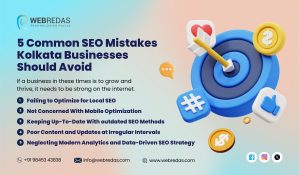For the past three decades, Search Engine Optimization has matured from simple, mundane tasks such as keyword stuffing into technologically advanced applications with AI-orchestrated algorithms. This timeline gives a holistic overview of this fascinating craft from its inception back in the early 1990s, all the way into advanced, user-oriented SEO that could be expected in 2025.
1990-1999: The Origins of SEO
With its birth in 1990, SEO began with Archie, popularly known as the very first search engine. It was a simple tool set up to index FTP archives, so as to allow users to locate files on various servers with the least amount of difficulty. Though the World Wide Web took birth in 1991, the early search engines like Excite, WebCrawler, and Yahoo! came into being towards the years 1993-1994, experimenting with their comparative ranking algorithms and techniques for indexing.
At that time, webmasters started to experiment with some basic optimization techniques. They started specifying the meta tags, often cramming keywords within to manipulate the rankings. Doorway pages and keyword stuffing were common methods. This, however, only reflected the ignorance of search engine algorithms.
The term Search Engine Optimization was first introduced in 1997, so 1997 became the year of SEO inception. Then, in 1998, along with the birth of Google, SEO changed its direction with its novel PageRank algorithm. PageRank judges a webpage by the quality and quantity of backlinks it gets, as opposed to the basic evaluation of keywords through keyword density on the webpage.
By 1999, webmasters started trading links among themselves and manipulating anchor texts in order to achieve higher ranking results, supposed to be penalized in later algorithmic updates.
2000-2009: The Google Era Begins
SEO began to shape the trading landscape for Digital advertisers with the launch of the Google AdWords Program in 2000. With its innovative ability to brand itself, Google saw rapid growth, and by 2003, click spam and keyword stuffing were addressed with the Florida Update: the first penalization of search engine results pages manipulation.
In 2005, the Nofollow tag was introduced amidst worries about comment spam, while Google Analytics was launched to furnish webmasters with accurate data related to user behaviour. It was during this period that SEO took its baby steps as a professional line, with agencies and specialists being nurtured the world over.
Back in 2007, Universal Search was introduced, whereby images, videos, news, etc., were included in traditional search results, enhancing the user experience. Then came the Caffeine update, which brought faster indexing to Google in 2009, thereby introducing fairly fresh results. In the meantime, Bing came into being to provide an alternative search.
2010-2019: Keywords to Intent
The 2010s marked a significant shift from keyword-centric SEO to an emphasis on search intent and user experience. In 2010, Google Places integrated local SEO, making local business searches more precise. The Panda Update in 2011 penalized thin content, rewarding quality over quantity.
The Penguin Update in 2012 targeted spammy backlinks, urging webmasters to focus on natural link profiles. Semantic search was introduced with the Hummingbird Update in 2013, allowing Google to interpret context and user intent more effectively.
By 2014, HTTPS became a ranking factor, emphasizing website security. Mobile optimization gained prominence, reflecting the shift toward mobile-first browsing. The introduction of RankBrain in 2015, Google’s first AI system, marked the beginning of machine learning influencing search results.
In 2016, mobile-first indexing was announced, prioritizing mobile versions of websites for ranking. The subsequent years saw featured snippets becoming more prominent, providing quick answers directly in SERPs.
The 2018 Medic Update focused on YMYL (Your Money or Your Life) pages, emphasizing E-E-A-T (Experience, Expertise, Authority, Trustworthiness) as critical ranking factors. In 2019, BERT was rolled out, enabling Google to better understand natural language queries.
2020-2025: The AI Era
The most recent years have been characterized by AI-driven innovations and a focus on user experience. In 2020, Core Web Vitals were introduced as part of the page experience ranking signals, emphasizing fast load times, visual stability, and interactivity.
2021 saw Passage Indexing, allowing Google to rank specific sections of content, making even long-form content more accessible. In 2022, MUM (Multitask Unified Model) was rolled out, enabling Google to understand multimodal, multilingual queries, further refining search accuracy.
2023’s Helpful Content Update prioritized content that is people-first and authentic, discouraging superficial SEO tactics. In 2024, Google introduced SGE (Search Generative Experience), where AI Overviews appear directly within search results, providing synthesized information at a glance.
Looking ahead to 2025, SEO is evolving into AEO (AI-Enhanced Optimization) and GEO (Geolocation Optimization), integrating AI and geographical data into ranking strategies. Agencies like the best SEO agency in Kolkata and SEO company in Kolkata are leveraging these advancements to deliver cutting-edge services, emphasizing authentic, user-centric strategies.
Whether you’re a local business in Kolkata seeking the best SEO agency in Kolkata or a global enterprise, understanding this evolution can help craft future-proof strategies that deliver real value. The future of SEO is exciting, filled with innovations that promise to make search more intuitive, personalized, and human-centric than ever before.





